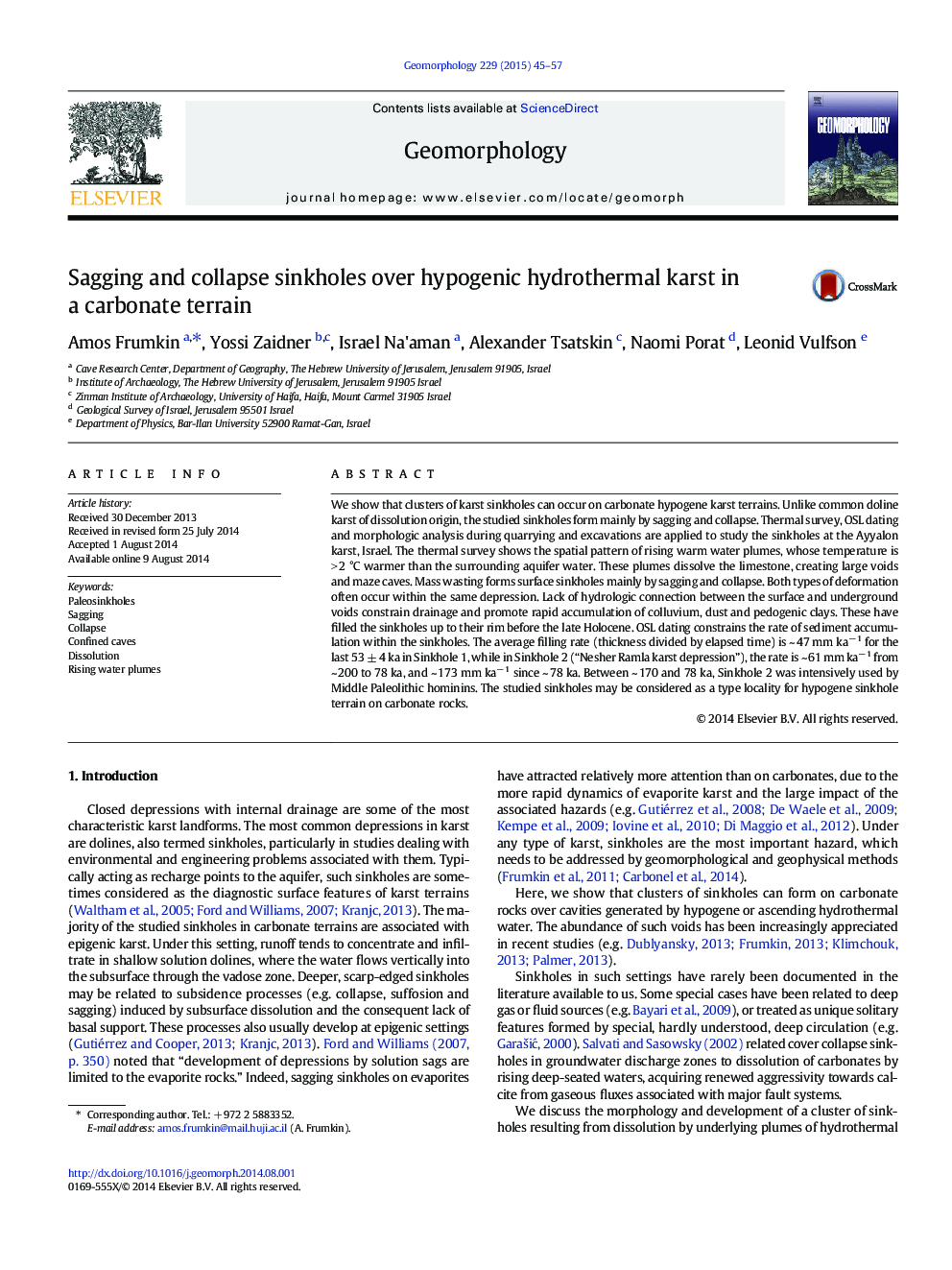| Article ID | Journal | Published Year | Pages | File Type |
|---|---|---|---|---|
| 6432360 | Geomorphology | 2015 | 13 Pages |
â¢Clusters of karst depressions can form on carbonate rocks over hypogene karst.â¢These depressions are often filled by sediments.â¢A cluster of depressions over hydrothermal karst in Israel is analyzed.â¢Thermal survey shows plumes of rising warm water within the underlying aquifer.â¢OSL dating shows sedimentary fill took place during mid-late Quaternary.
We show that clusters of karst sinkholes can occur on carbonate hypogene karst terrains. Unlike common doline karst of dissolution origin, the studied sinkholes form mainly by sagging and collapse. Thermal survey, OSL dating and morphologic analysis during quarrying and excavations are applied to study the sinkholes at the Ayyalon karst, Israel. The thermal survey shows the spatial pattern of rising warm water plumes, whose temperature is > 2 °C warmer than the surrounding aquifer water. These plumes dissolve the limestone, creating large voids and maze caves. Mass wasting forms surface sinkholes mainly by sagging and collapse. Both types of deformation often occur within the same depression. Lack of hydrologic connection between the surface and underground voids constrain drainage and promote rapid accumulation of colluvium, dust and pedogenic clays. These have filled the sinkholes up to their rim before the late Holocene. OSL dating constrains the rate of sediment accumulation within the sinkholes. The average filling rate (thickness divided by elapsed time) is ~ 47 mm kaâ 1 for the last 53 ± 4 ka in Sinkhole 1, while in Sinkhole 2 (“Nesher Ramla karst depression”), the rate is ~ 61 mm kaâ 1 from ~ 200 to 78 ka, and ~ 173 mm kaâ 1 since ~ 78 ka. Between ~ 170 and 78 ka, Sinkhole 2 was intensively used by Middle Paleolithic hominins. The studied sinkholes may be considered as a type locality for hypogene sinkhole terrain on carbonate rocks.
